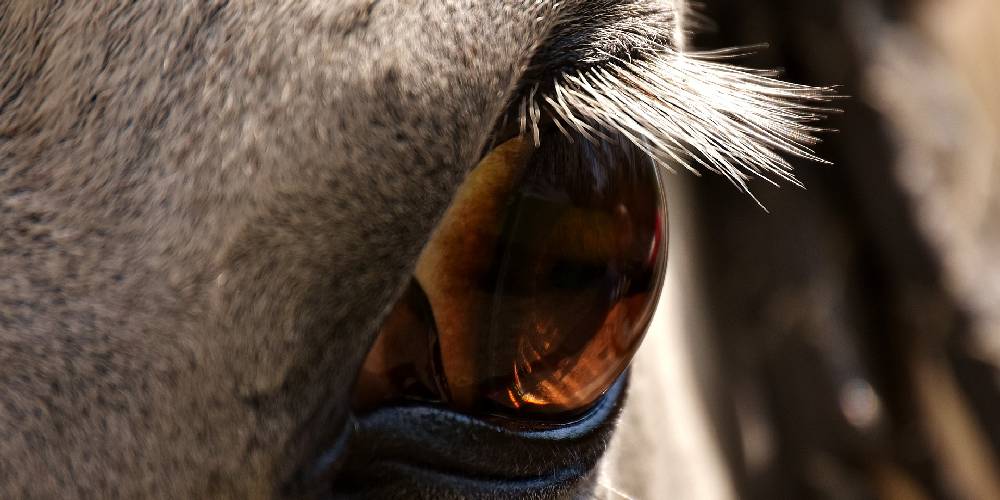Horses have very interesting eyes that are a lot different from our human eyes. Here are ten fun facts about the horse’s eyes that you probably didn’t know!
1. Horses Can See Color!
Most people think that horses are colorblind, but this is actually not the case. They just can see fewer colors than we humans can. For example, horses have dichromatic color vision and humans have trichromatic color vision. Humans can see the colors red, orange, yellow, green, blue, purple, and everything in between, but horses can only see green, yellow, and blue. Horses have a similar color spectrum to that of a person with red-green colorblindness. Red and green to horses appear identical and deciphering many colors is difficult for them.
2. Horses Have One Of The Largest Eyes Of Any Land Mammal
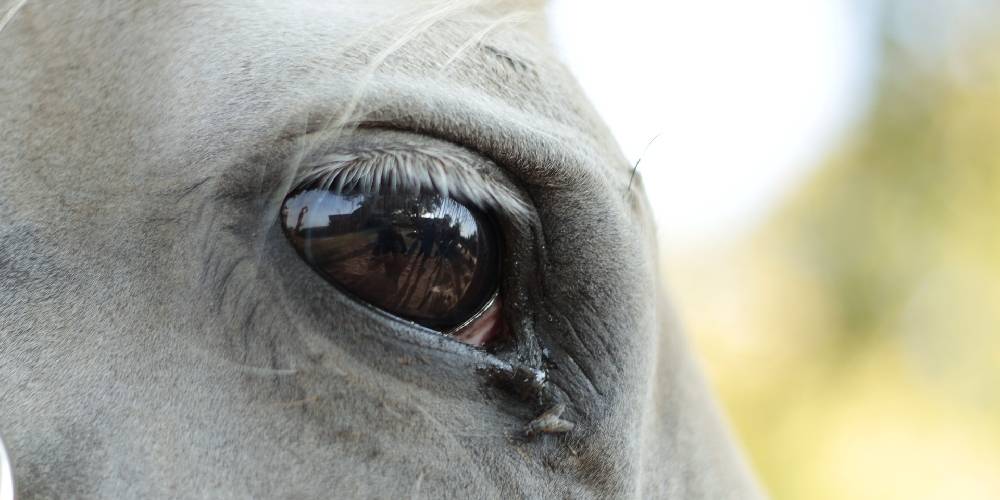
I know this may be hard to believe seeing that there are land mammals like the elephant or giraffe that are so much bigger than the horse, but yes, the horse has the largest eye out of any land mammal. Horses need large eyes so they are better able to see their environment. Because they are prey animals, having large eyes makes it easier for a horse to see approaching danger.
3. Horses Are Farsighted
Horses are actually farsighted animals meaning they can see objects more clearly when they are far away from them than if they are close to them. This means that when a horse is jumping, they can see the jump ahead of them, but really struggle to see the jump clearly even when they are just two meters away from it.
This goes for barrel racing as well, as a horse approaches the barrels, they struggle to see the barrel clearly and need some guidance from the rider to help direct them around the barrel before going to the next one.
This farsightedness can also relate back to why your horse is able to recognize you or your car from a distance as they are able to better see you from a distance than they can up close.
4. Horses Can Have A Variety Of Different Colored Eyes
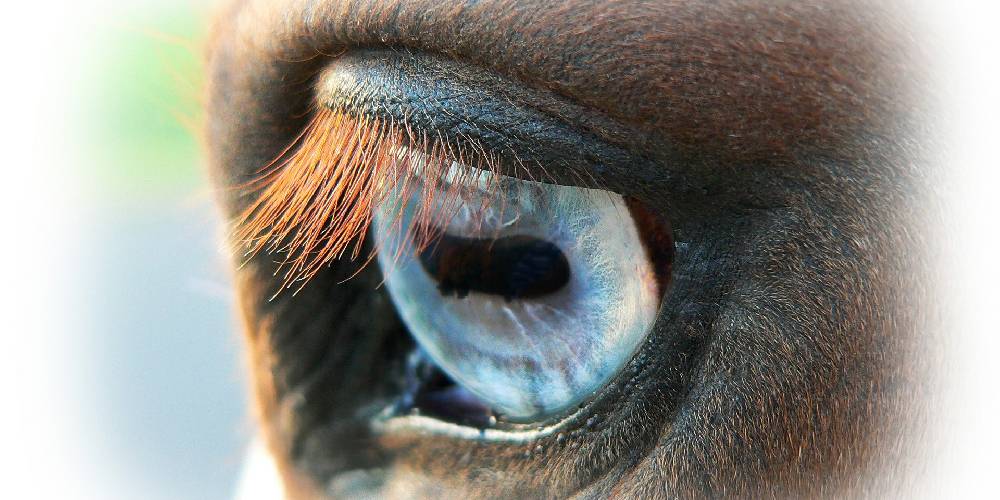
Most horses have just brown eyes, but did you know that there are so many other options for eye colors in horses? The colors that a horse’s eye can be include:
- Brown (obviously)
- Deep Blue
- Pale Blue
- Pale Green
- Amber
- Orange
- Yellow
- White
- Part-Colored (brown and blue, white and blue, brown and pale green)
- Pink
5. Horses Have Their Eyes On Either Side Of Their Head Because They Are Prey Animals
As you might notice, horses have their eyes on either side of their head. The reason for this is that they are prey animals. A prey animal is an animal hunted by predators for food. Horses and other equines are classified as prey animals because they don’t eat meat, and have their eyes to the sides of their heads. In predators like wolves, lions, and tigers, you might notice that their eyes are in the front of their faces so they can look ahead. Horses and other equine animals have them on the sides of their head so they can look all around them on the watch for predators.
6. Up-Close Objects Look 50% Larger To Your Horse Than They Do To You

Horses have a strange way of seeing and will actually see objects much larger than they actually are. This means that not only does your horse see objects as big, but they see you as big too. This can be credited to their farsighted vision as in farsighted horses, they have trouble seeing things accurately up close.
7. Horses Have A Poor Depth Perception
Have you ever wondered why your horse has a hard time going into a trailer? Or even walking through a puddle? Here’s why.
Horses have an extremely bad depth perception so to them, a trailer might look like a dark never-ending abyss and a puddle might look like a water-filled pit in the ground even though we both know that this is not the case.
This is why some horses also will over or under jump certain obstacles as they have a hard time knowing how big something is when they approach it.
8. Horses Can See Almost 360 Degrees Around Them
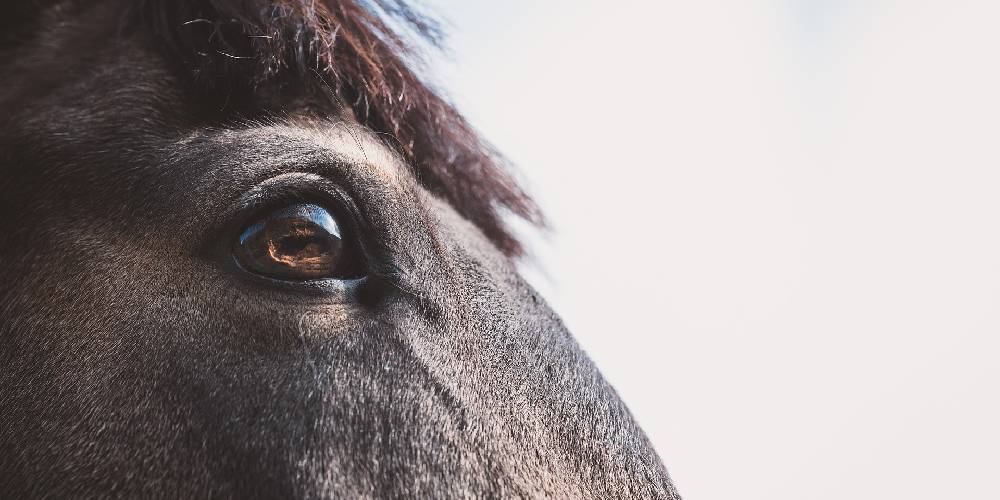
Because horses are prey animals and have their eyes on the sides of their heads, horses can see nearly 360 degrees around. Horses, can see 146 degrees on each side with one eye (monocular vision) and 65 degrees in front of them with both eyes (binocular vision).
As I mentioned before, horses can see almost, but not quite 360 degrees around them. This is because they have two blind spots. The blind spots on horses land directly in front of them and directly behind them meaning they can’t see right in front of their muzzle, and they can’t see right behind their tail.
9. Horses Have Night Vision
Did you know that horses can see in the dark? This is why horses can get along just fine at night without worrying that something might jump out at them because they will plainly be able to see danger coming if danger does arise.
Even if you were to go riding at night, twilight, or at dusk, your horse will be able to see just fine as it gets darker. This ability to see in the dark is also something that horses have been able to do thanks to their wild ancestors who needed to keep watch over the herd at night to ensure that no predators came to the herd.
10. Horses Eyes Glow White At Night
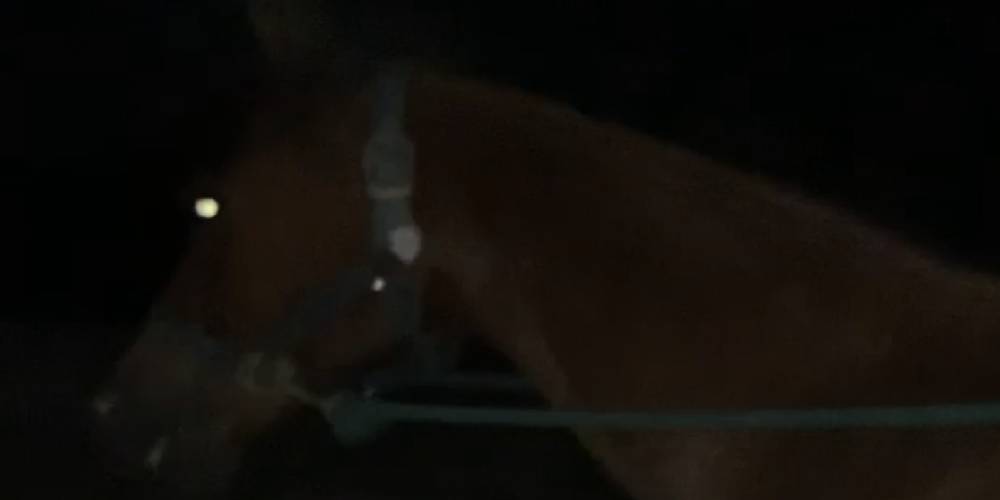
You might notice that in trail camera photos, nighttime photos, and other images a horse’s eyes glow white at night. This is similar to that of deer and other prey animals who have eyes that glow white.
If you want to test this out yourself, at night, take a picture of your horse in the dark with the flash on and in the photo you will see their eyes glowing yourself.
The reason their eyes glow at night is because of something in the horse’s eye known as a Tapetum Lucidum. This Tapetum Lucidum causes light to reflect off of the eyes therefore giving the illusion that the horse’s eyes are glowing.

